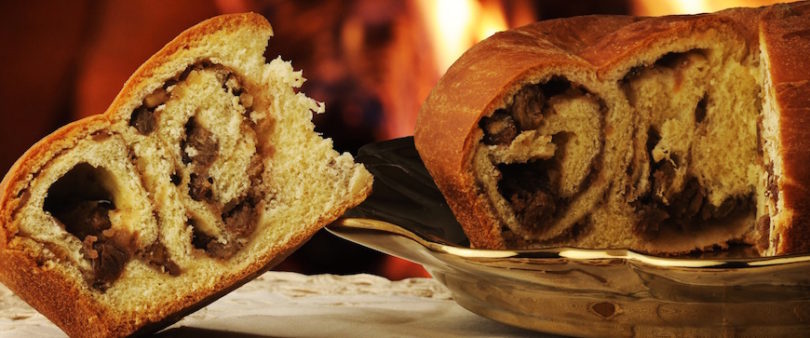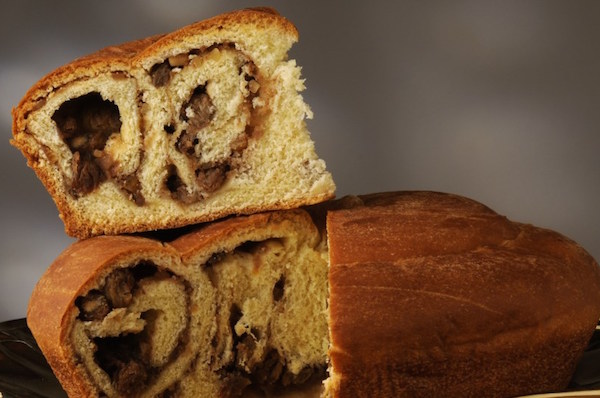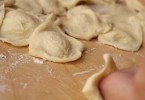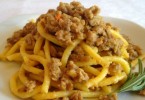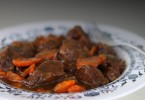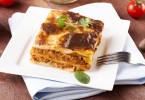The traditional Gubana of Friuli Venezia Giulia
Fragrant, rich and tasty, Gubana is an unforgettable dessert. This is a typical cake of Friuli Venezia Giulia and it has a long and interesting history tied with its origins of border region and the great characters of the Italian history.
Gubana is a baked cake with a snail shape that hide inside a soft and sweet rose dough and a rich stuffing made of dried fruit among which walnuts, pine nuts, raisin and sugar.
The stuffed snail rises and then it is cooked in round moulds of 20cm. It is served cut in slices, to show the alternation of dough and stuffing which releases its perfume of lemon zest, sugar and cinnamon. It is eaten at the end of the meal sparkled and slightly wet of grappa or slivovitz (a plum spirit) to give it a rich and strong taste.
Gubana history
The name gubana derives from the Slovenian word guba, which means “fold”, to remind its rounded shape; it is a dessert typical of the border zone between Slovenia and Natisone Valleys, that connect Cividale del Friuli (where you can taste extraordinary Gubana) and the Isonzo Valley. Gubana is the symbol par excellence of the, culinary and linguistic mix between the two border cultures and boasts a long history on the Friulian and Slovenian tables.
In Friuli, the first news on this cake date back to the 1409 when it was enclosed in the list of the food cooked and served during the visit of the Pope Gregory XII in Cividale del Friuli.
During the XVIII century Gubana was so widely spread that it was mentioned in the manuscript of Della Porta dedicated to the food theme. Traditionally, it is eaten during the Holydays or other special days as engagements, Easter and Christmas. Still today, it is tradition to taste at the end of the meal the different versions of Gubana, prepared by the relatives, valuing the differences of the stuffing and the preparation.
The traditional Gubana recipe
The preparation is not easy or quick, but the results won’t leave you disappointed.
For the dough:
250g of flour
60g of butter
60g of caster sugar
2 eggs
10g of brewer’s yeast
1 lemon
Milk
Salt
For the stuffing:
100g of walnuts100g of raisin
40g of dried plums
50g of pine nuts
50g of peeled almonds
40g of dried figs
50g of caster sugar
20g of butter
½ glass of grappa
Cinnamon
For the dough: make a well on the flour (leave aside 50gr of flour, that we will use later), pour in the middle the yeast, melted in advance in the warm milk and sugar; as you knead the dough, pour the sugar, the lemon zest, eggs and salt. Make rise for 1-2 hours, and then knead slightly mixing the remaining flour and butter. Make rise another half an hour. In the meantime prepare the stuffing: blend roughly the walnuts, the pine nuts toasted in advance in the butter, the peeled almonds and the raisin soaked it in rum or grappa, the plums and the dried figs. After a first blending, add sugar, lemon zest, cinnamon and grappa. If the dough is too thick, dilute it a drop of liquor or water.
Roll the dough out in a rectangular shape and place the stuffing. Round making folds and lengthen the roll up to 70cm. To make the snail, fold an end and round the roll all around. Place the other end below to close the snail. Make rise for some hours, brush with shipped white eggs, sugar and bake at 160° for one hour.

